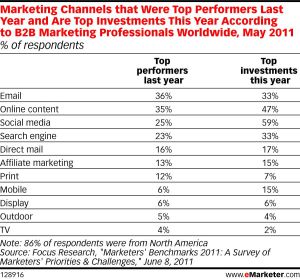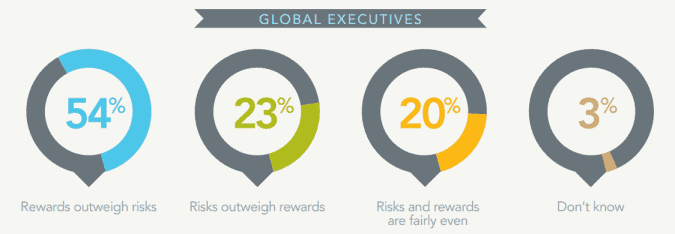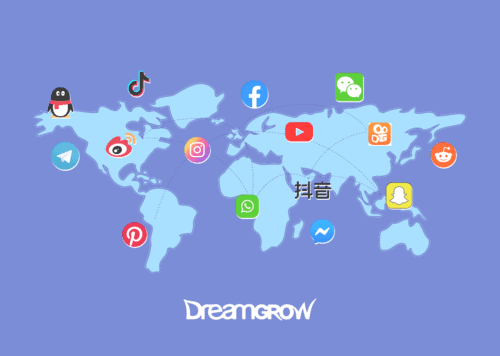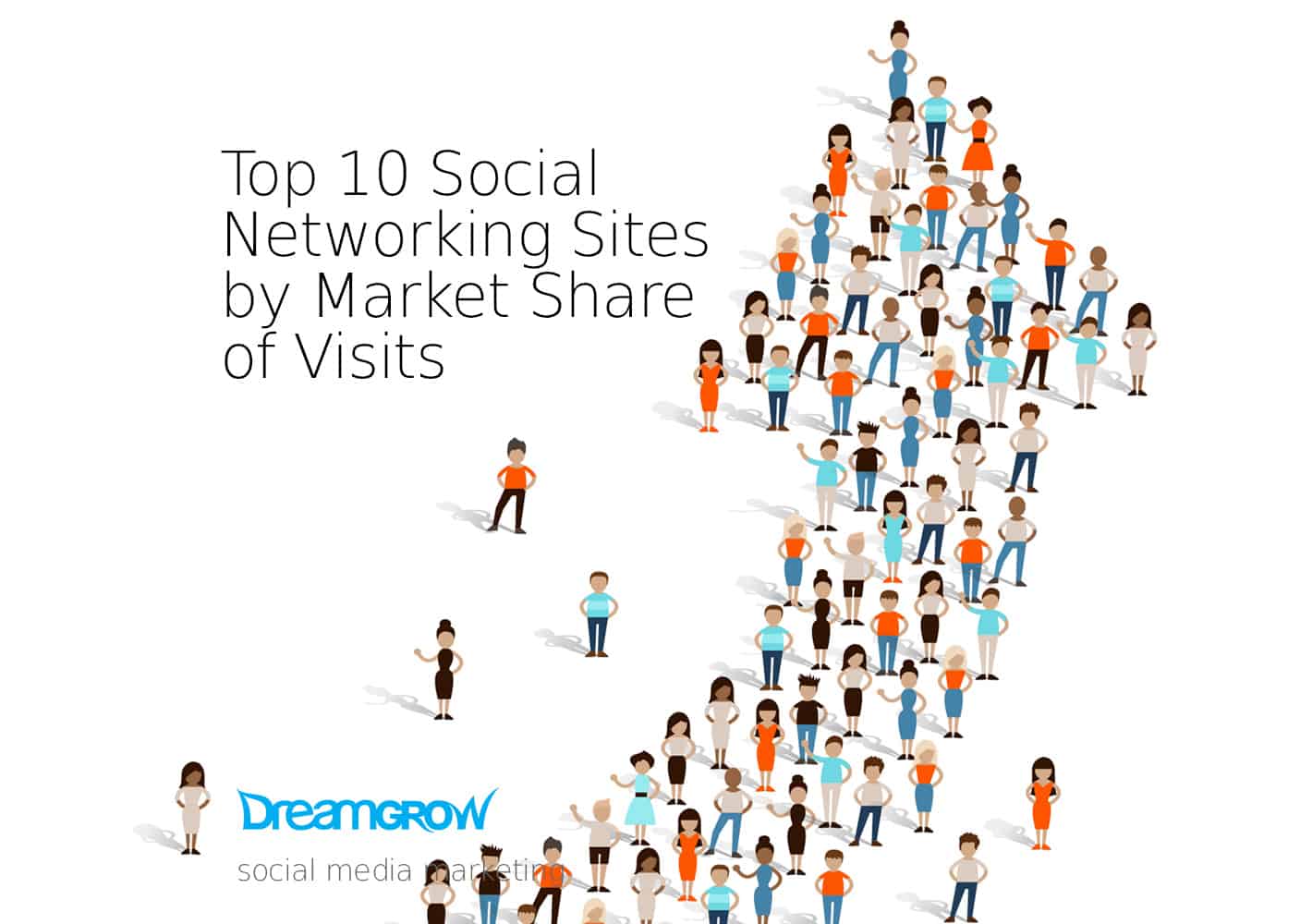
The questions are preceded by my initials KCP, Kelli-Carolin Parkja, and the experts' answers are indicated with their names.
The interviewees:
- Andrea Colaianni, Social Media Consulting Director, SAME SAME Agency,
- David Meerman Scott, Marketing and Leadership Strategist,
- Jay Baer, Social Media Strategist at Convince and Convert,
- Jen McClure, Senior Director, Social Media Strategist at Thomson Reuters,
- Michael Hopps, Social Media Specialist at Cisco Systems and
- Peter Kim, Chief Strategy Officer at DachisGroup.
KCP: How do you define the value of your marketing efforts?
Andrea Colaianni: We need to consider our marketing efforts from several points of view. It does not just mean getting money or return on investment from marketing. You also have to look at it from a long-term perspective. You have to consider all the value of engagement that you can have with your customers and all the value in terms of corporate equity and awareness. It is especially important to build a strong image for one's enterprise and moreover, with our marketing efforts we need to build a strong reputation for our enterprise.
David Meerman Scott: The value of marketing comes from being able to drive people to your brands, products and services by way of the content that you create for them online. I am going to specifically talk about online marketing. When somebody goes to the search engines to look for a certain product and when they ask their friends or colleagues or family members, then they are also going to generate content. This helps people to get interested in what you do and the best way to do that is to create valuable information online.
Jay Baer: As a consulting firm, we look at three things first. We look at attention – whether we can generate views, downloads, clicks, subscriptions to content that we create. So attention is at the top of the funnel. Then we look at leads, that means people enquiring about hiring us for a consulting, about enquiring us to come and speak at conferences, that sort of middle of the funnel lead generation. At the bottom we look at actual sales. Clients generated, opportunities booked, do we actually make money as a result of the social media activities that we have engaged in? We really look at it from the business perspective, we don´t pay a lot of attention to the number of Twitter followers, number of Facebook fans, because ultimately, all of that needs to build into a business outcome. We measure marketing value by inbound leads and sales, which we then translate into loose ROI calculations.
Jen McClure: It is a mixture of qualitative and quantitative assessment. The quantitative and qualitative is getting easier because of social technologies. We have a lot more opportunity to hear the words of our customers, of how they react to our marketing and how they react to our brand because of social. We are not just broadcasting our messages out to them and never really understanding how they resonate on the public. Now we understand very clearly how those messages are resonating on the public. We see that in things like for example GAP changing their logo and then having the customers saying that they hate that logo. Social gives us voice and that changes how we measure the value. Now we look at things like engagement levels. We have social technologies that have brought meaning to what engagement is. Does it mean, for example, that someone takes time to comment or to share an article or create their own meaning around the brand and post that somewhere. So there are these new levels of engagement that we can have with our customers that really can define what kind of relationship we have and therefore measure the impact we are having on them with our marketing efforts.
Note: at the request of Jen McClure and Michael Hopps, the author points out that the answers by these two experts do not reflect the answers of their current employers but are based on their professional experience.
Michael Hopps: The value of an enterprise’s marketing efforts is defined by how it is using marketing to listen to its customers and how it is addressing their needs. The faster and the more efficiently the enterprise can do this, the more satisfaction it brings to the customers. As a social media specialist, I see it from a social perspective. Quickness and quality of addressing the customer are important in any kind of marketing campaign. But in comparison with traditional marketing activities, social media enables organizations to address their customers at a higher speed and across a larger scale.
Note: at the request of Jen McClure and Michael Hopps, the author points out that the answers by these two experts do not reflect the answers of their current employers but are based on their professional experience.
Peter Kim: When talking about marketing value, there are both short-term and long-term metrics to consider. The most important both in short-term and long-term is business results, so sales are most important at the end of the day. Sales in turn lead to profitability, which lead to evaluating revenues versus expenses, cost of sales and how do we drive business. Those are some important ways to define marketing value. Aside from sales, a tactical, tangible measure, we start to layer on longer-term metrics that are early links in the value chain. Measures like brand awareness, brand recognition that lead to purchase decisions and consideration and then of course again to sales. It is defined, first and foremost, as the abilities to drive business outcomes, which lead in most cases, all cases, to a certain sales or profit services. Then getting away from that or going beyond, would be activities driven by marketing activities that get us to sales.
KCP: Of all the different mass communications tools your organization is using, which is raising the most euros/dollars (directly or indirectly)?

Andrea Colaianni: The problem is that sometimes both agencies and clients think about how to use some tools or some strategies because they are a trend. For example, several years ago, emailing was a trend and today we talk about social media as a trend. We forget that marketing is a mix of tools and strategies. Today, social media is of course one of the most powerful activities in terms of proximity with our customers. But we always need to think about marketing as a mix of tools and approaches. For example, brand content – it is not really a strategy, but just a part of the strategy and we have to integrate it into the universe of the brand, which we call the brand platform. The brand platform is built of different kinds of strategies, of different kinds of tactics and of different kinds of tools. Social media is not a strategy, but it is a part of a strategy, it is a part of a brand.
David Meerman Scott: We need to get back to the first question to answer this one. Ultimately, the job of marketing is to make sales and to help a company become more successful. That is what is going to have to happen when you are doing marketing. The answer, which is the right channel – is it TV or radio or newspaper or another channel – that is only a question that each individual company can determine for themselves. But what I can say, is that in general, the best tool for reaching potential customers is the online channel by far. Because every single person practically in the world has access to content on the web. It can be just through a mobile phone, but everybody is online and everybody is using their mobile phones or other ways to connect to online in order to find answers to their problems and to research products and services. The most important thing for companies is to be focused on the online channel, because it is the best in terms of number of people and growth.
Jay Baer: Probably Twitter, just because our audience is the largest on that platform. We reach more people on Twitter than we do anywhere else, but it is definitely a continuum. The way it works for us, is that Twitter drives people to the blog, the blog generates leads and the leads become sales, so there really is a funnel there. If we had Twitter alone without the blog, would it be successful? I do not think it would be as much, no.
Michael Hopps: Social media is gaining attraction among executives both across B2B and B2C companies. B2B companies like Cisco and B2C companies like Starbucks and Google and BestBuy – all are making large investments in social media. That is very interesting to see, considering the newness social media. General trends that are showcasing my belief, include a report by eMarketer, that demonstrates global B2B companies' budgets across social media. This report indicates that social media is a rising marketing performer in terms of investment. In 2010, social media was at 25% in terms of the marketing budget investment and in 2011, social media jumped to 59%. So it can be noted that social media is massively growing in terms of investment and in terms of marketing budgets.
KCP: Why are enterprises investing so boldly? What is this engagement and this jump in investments, from 25% to 59% in one year, based on?
Michael Hopps: Social media is relatively cheaper than a traditional TV ad or an ad campaign. It is a lot cheaper and more reliable. Social media carries viral characteristics to fuel a post-ad campaign gateway of exposure for the airing TV ads. So these characteristics make social media more of a savvy investment in comparison with the other marketing activities. Some CMOs and CEOs however are still a bit hesitant in investing in social media as it is a relatively new tool. I would say that B2B enterprises like IBM and Cisco carry a very strong belief in the collaboration and customer engagement and that is naturally transforming them into top players in social media, especially in the B2B sector.
Peter Kim: The answer depends on the industry the company is operating in. For example, in the US telecommunications industry, the largest spenders on measured media are AT&T and Verizon. AT&T spends two billion dollars a year on measured media – TV, radio, and other traditional above- the-line advertising. When you are in the telecommunications industry, another company in that industry, the standard is set pretty high. You have no choice but to participate in certain channels. So depending on the competitive dynamics of a particular industry. In general sense, it is important to have an integrated approach regarding all the channels. While there is a lot of interest in social media and social media marketing channels, it is also important to make sure that anything that stands in social media, goes into digital and traditional marketing. What we recommend, how we approach it, is to ensure that all of these channels are used. It is important to determine what is the most appropriate way to reach our consumers and also the understanding of competitive dynamics as a part of the strategy.

KCP: Why do you use social media and what does it mean to you?
Andrea Colaianni: We need to make a difference between tools, technologies and what we do, that is – what people do. Technology is just the way of communicating with our customers. Social media reality is what is already happening since several years. Since the very start, people have wanted to communicate. People want to share and they want to be a part of the reality of the world. Today, they can also be a part of the decision-making and the marketing and the strategy of the brand and of the enterprise. People are already lovers of a brand or they already interact with a brand, they buy it and they also help to “build” it. Today we can talk about the brand online. Social media is an opportunity for an enterprise to be a part of this conversation. Today, enterprises can talk with people – customers, employers, media, shareholders – and they can share and be a part of this kind of a conversational world.
David Meerman Scott: The difference between mainstream media and social media is that mainstream media allows only a one-way communication. It is a newspaper or a television, for example. Social media is where people can interact with that content. That means things like videos, for example. Because you can create your own video, you can post it online, and people can comment on that video. It also means things like blogs, Twitter, Facebook and LinkedIn. My definition of social media is pretty broad. I also include the idea that a newspaper or magazine create a piece of content and if they allow people to comment on it, even though it started out as mainstream media, it can still become social media. I even include Amazon reviews or other products that allow reviews as a form of social media. So all those things are social media.
KCP: So, social media means interaction?
David Meerman Scott: Yes, any piece of content on the web that allows interaction.
Jay Baer: What I like about social media is that it closes the gap, it closes gaps between people. My co-author, Amber Naslund, who wrote a book with me, said something a long time ago, and it really lingers true. She said that what she likes about social media is that it dictates that her friends are no longer defined by geography or circumstance. You can have relationships with people all over the world, you can have relationships with people who are not necessarily in your profession. It makes a big world a lot smaller. The same is also true from a business perspective, thanks to social media, every customer is a reporter now, every customer has the ability to punish or praise brands in five seconds and that is a pretty spectacular change in the way that business is done. Social media allows me to demonstrate expertise and shine the light on other people doing great work in the social media and content marketing industries.
Jen McClure: Here I can talk about Thomson Reuters. The way that we view social media tools is as business tools. We don't just use them as marketing and communication tools, we actually use them very holistically throughout the company. We have a social intranet that we use for employee communication and collaboration. We use social tools in a way to serve our customers through our services and support organisations. We monitor social channels to communicate with our customers that are having problems with our products or have questions about pricing. We can identify sales leads via social. We look for insights that can inform how our customers or how our prospects are thinking about our brand, but also for innovation that we want to pursue, in ways that we can serve them better. We also, of course, use these social tools for more traditional communication and marketing practices. We use them to increasingly strengthen our relationships with customers, have conversations with them, to enhance our leaderships with our executives and leaders through blog posts to industries that we serve. We also use them for recruitment and retention effort, with perspective employees and also with existing employees we use a lot of social media. We really try to think about every function of business and how we can use social tools that can enhance that function.
Michael Hopps: Social media is more than just a fad. It is a real-time live channel that enables people to connect with each other. I would definitely look at social media in two ways. One way of looking at social media is internally. That means looking at employee engagement in social media – is it accepted in an enterprise or not. On a professional level, social media increases employee satisfaction. Companies are slowly learning this and they understand the need to adapt their policies to attract more high quality younger talent. In order to answer the second half of this question we need to look at social media usage by an enterprise externally. I believe that social media can be used to address customers quickly as I mentioned in my previous responses.
Peter Kim: Social media is primarily digital communication channels used for one-to-one engagement, direct engagement. As we see from the marketing perspective, there is a lot of cross-over with digital marketing tactics. Social indicates a two-way communication. A two-way engagement is expected in opposition to email marketing or online display advertising, that kind of one-way advertising. Social media brings new opportunity and is important to integrate it into what is traditionally one-way unidirectional mass communication. That allows brands to do two of things. Firstly, engage on a personal level with consumers and fans and advocates and secondly, create deeper relationships than mass advertising channels from the past.
Next extract of the interviews will cover the most important question – the ROI of social media. Don't miss it… Sign up for our social media news and we'll let you know when it's ready!




